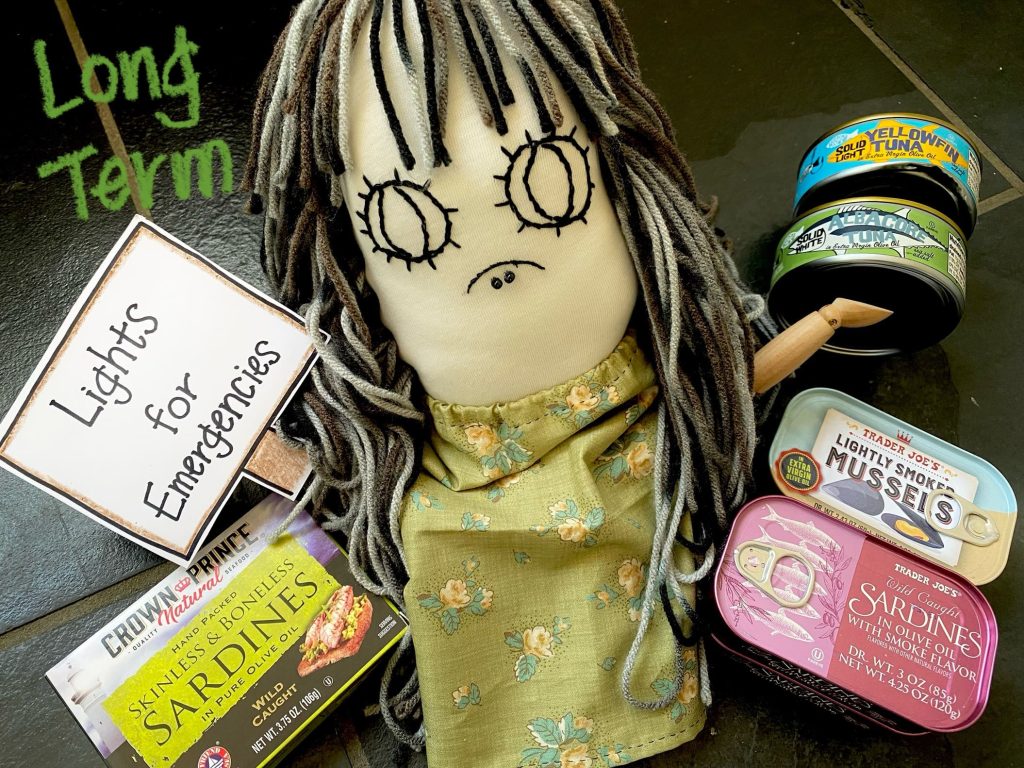
Which light sources should I prepare for a long-term emergency?
My lights are attached to a solar charger.
I can use them indefinitely.
I have a portable solar panel!!
I hope that every day is sunny.
I see. We don’t know how long the emergency situation will last…
Nowadays, we can easily find portable solar panels, solar generators, and solar batteries, for emergency situations, for sale in the marketplace. You might already have some of these types of solar products. They are generally considered a good, convenient option for dealing with power outages. But wait a minute…
I know it will be good if we have functioning power tools in an emergency, but personally I am not planning to buy portable solar panels and generators. I am not confident in my ability to maintain them over the long haul. How would I get replacement parts in a post-apocalyptic world? Instead of buying a bunch of solar panels and generators, I prefer to learn how to make my own lights, by myself, from things I can find in nature, or from things I know I will be able to obtain, easily.
“Knowledge is power.”
“An investment in knowledge pays the best interest.”
I love these words, and I believe that knowledge is our last resort for long-term emergencies.
My grandmother told me that if war and bombs are coming our way, we will have no time to carry anything, and the best we’ll be able to hope for is to survive the bombs. (Tokyo Kushu: The bombing of Tokyo.) Tsunami, landslides, volcanic eruptions, and giant meteorites are all similar. Try to survive first, then think about how to live without anything, starting from zero. Even if we lose all of our things in a disaster, so long as we survive, we will still have our knowledge. This is an important point. Please keep this in mind.
Learn from our ancient history?
1. Real light was the sun, a long time ago. If we follow ancestors’ way, our lifestyle will be guided by the sun’s cycles. Waking up with the sunrise, going to sleep with the sunset.
It was very smart. Our ancestors built their castles with the directions of sunlight and moonlight in mind.
2. Limited nighttime activities. If we have a full moon, we can stay up late. In the wintertime, when we have long, dark nights, then can we build fires and use lights. A long time ago, the moonlight was brighter, and people could walk around at night.
3. Using fire as a source of light. The first and simplest man-made light source was the torch: branches or a bunch of sticks tied together.
4. Try to find beeswax, tree wax, fish oil and vegetable oil for making candles or lamps. People used to make candles and lamps during the summertime.
You might need to use food from your long-term stockpile (post #19) for making candles and oil lamps.
This is an important, additional consideration when you pick up food and supplies for your long-term stockpile.
5. Be careful. Fire is critical for survival, but it is also dangerous and destructive. Our ancestors knew how to use fire, carefully. Younger generations these days don’t have many opportunities to use fire, even matches. If we want to practice, it should be a small flame, in a safe, windless place, with water nearby, and we should stay with the flame at all times.
Making DIY oil lamps
Many people stock canned foods for their emergency stockpile (see post #27). We usually think about using canned goods as an emergency food source. Obviously. But actually, we can use canned food in another way during an emergency. There is simple way to use canned food to make an emergency lamp.
Use canned tuna and canned sardines
★Tuna can
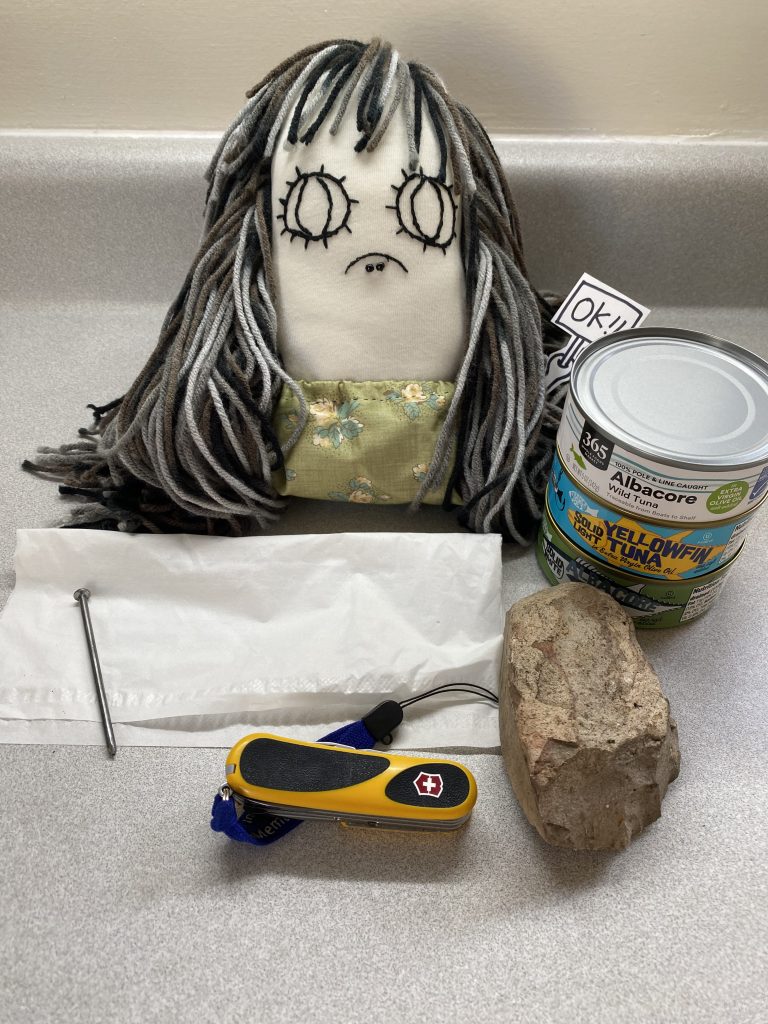
You will need something to poke a hole in the top of the tuna can. You also will need a Kleenex (facial tissue) or some toilet paper to use as a wick for your lamp.
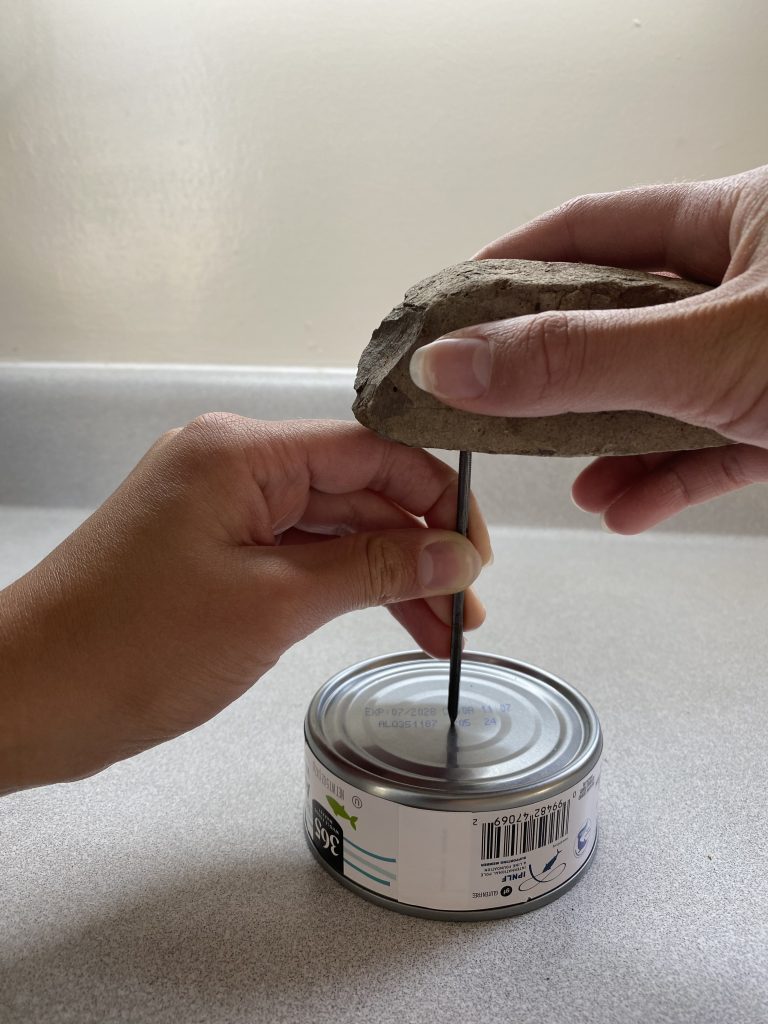
Make a hole in the top of your can. Be careful to not to poke a hole all the way through the bottom of the can. You only want a hole in the top.
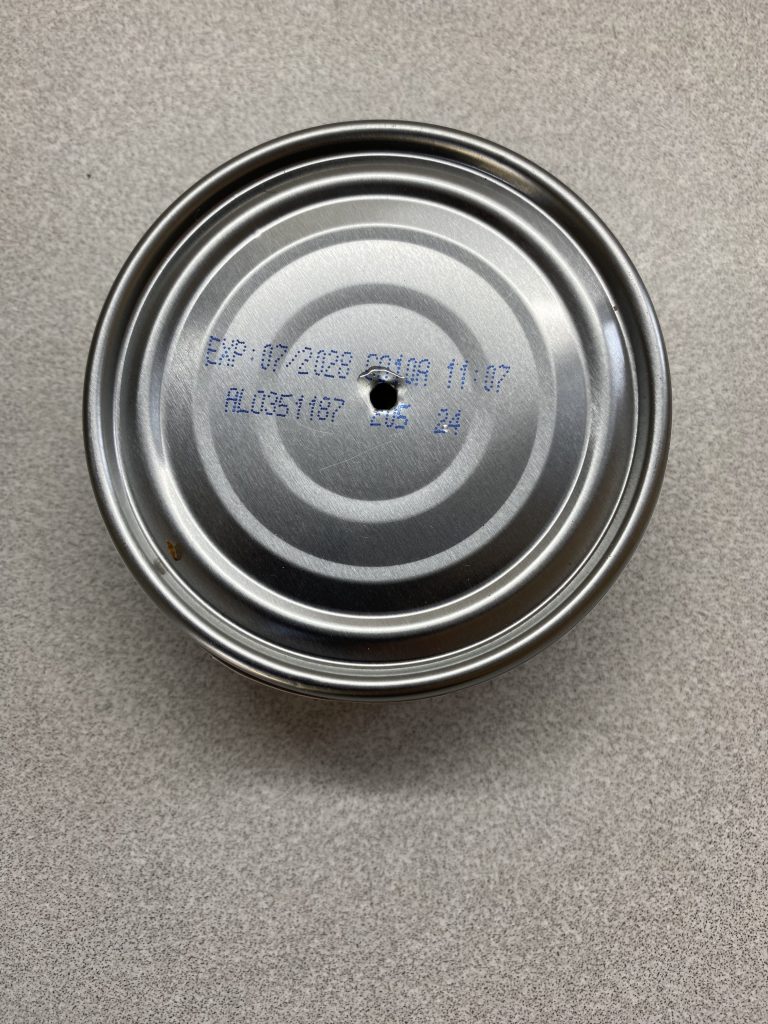
OK!
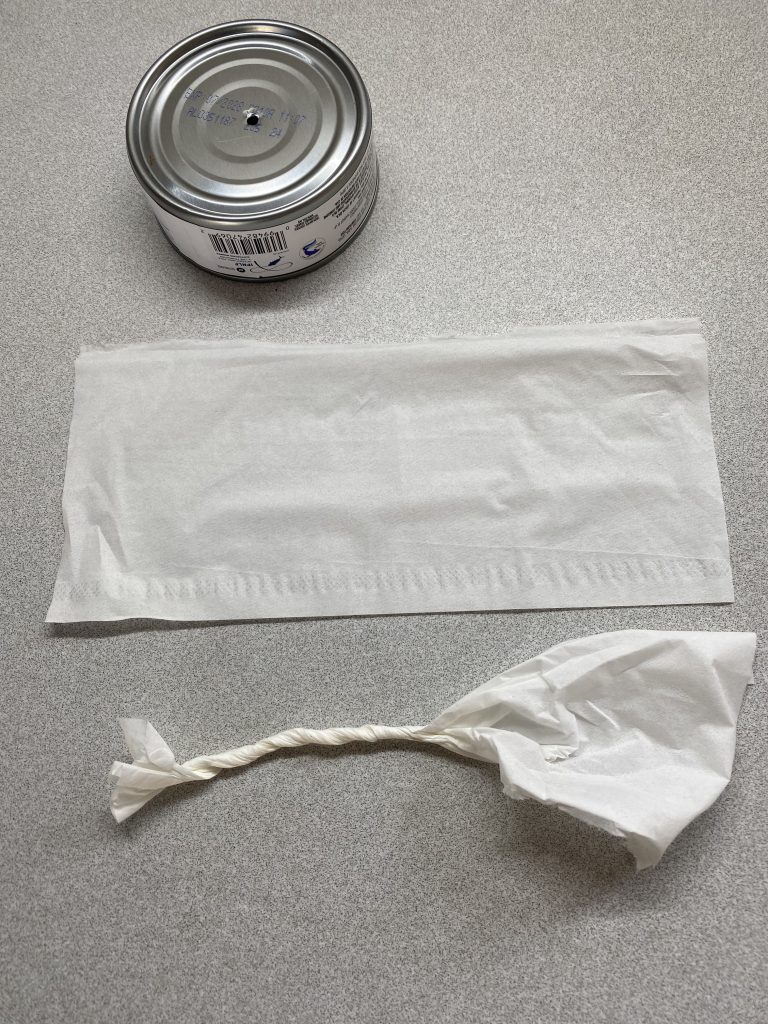
Cut your tissue in half, and twist it.
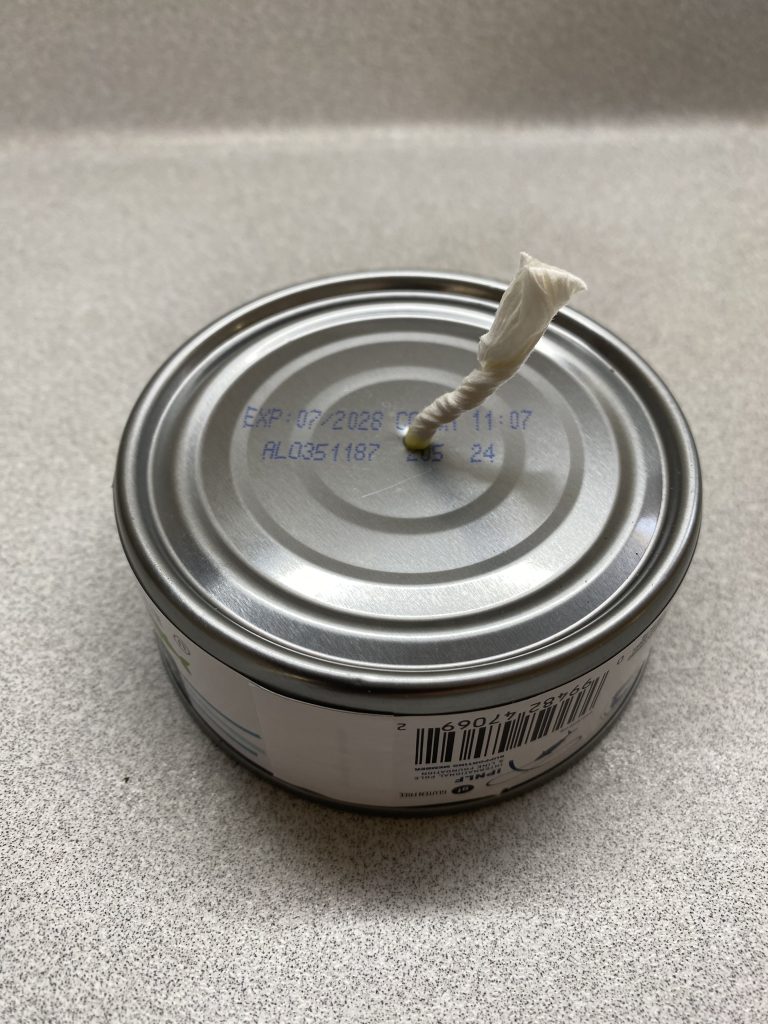
Put twisted tissue into the hole. And wait a few minutes for the tissue to soak up some of the oil from inside the can. (This absorption is called wicking or capillary action.)
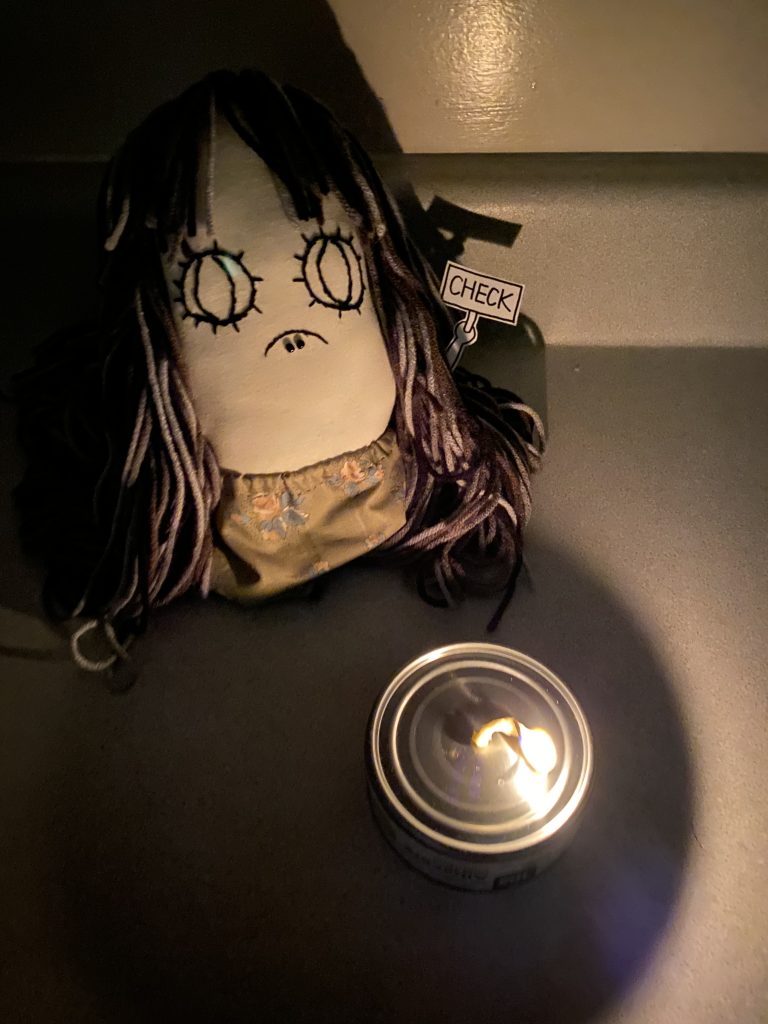
You should get about 60 minutes of light from your lamp. Then you can eat the leftovers!!
★Sardine can
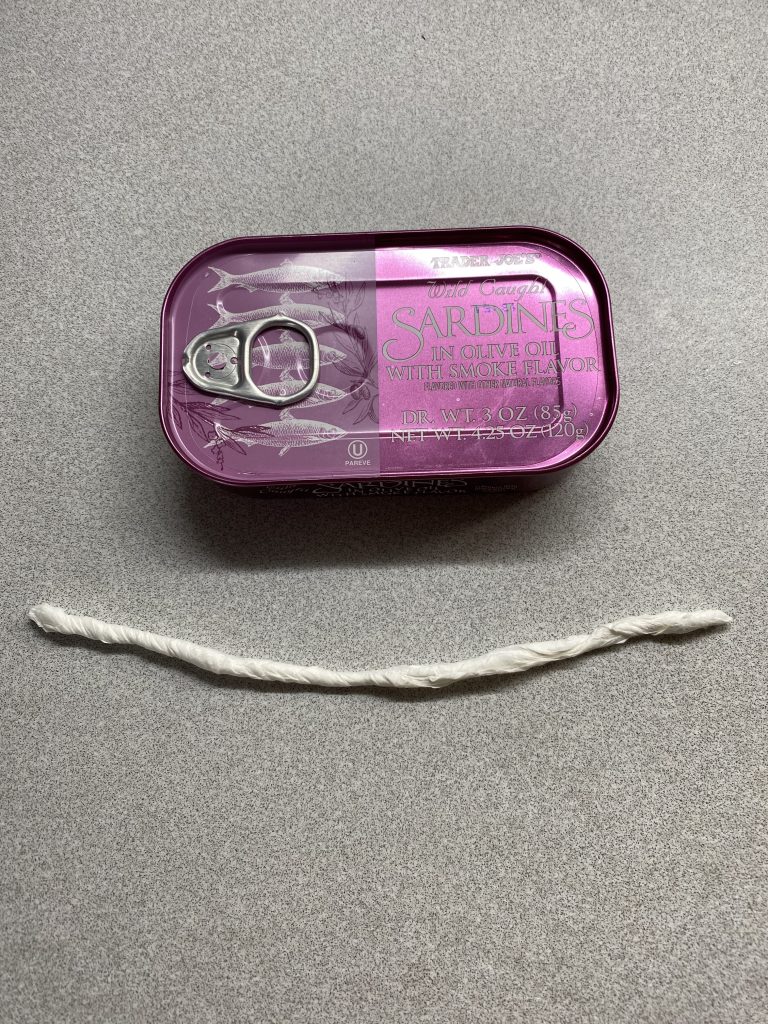
You’ll need something to use as a wick. For this demo, I used twisted tissue again.
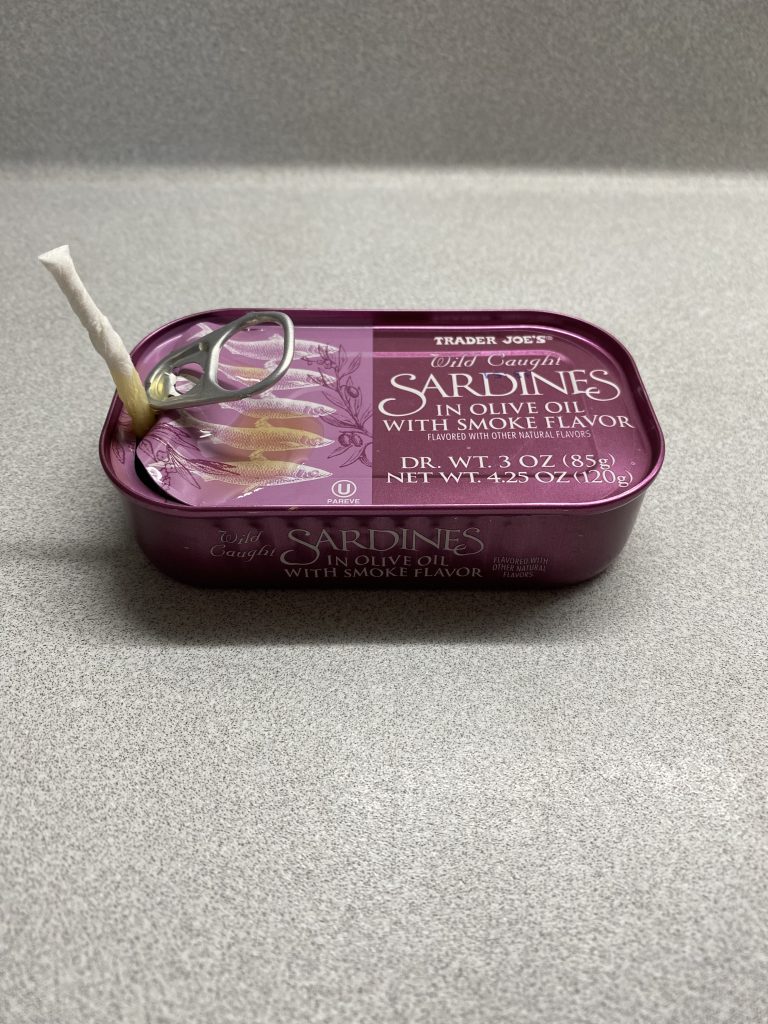
Open the can little bit, and insert your twisted tissue into the can. Let it sit for a few minutes so the wick can absorb oil from the can.
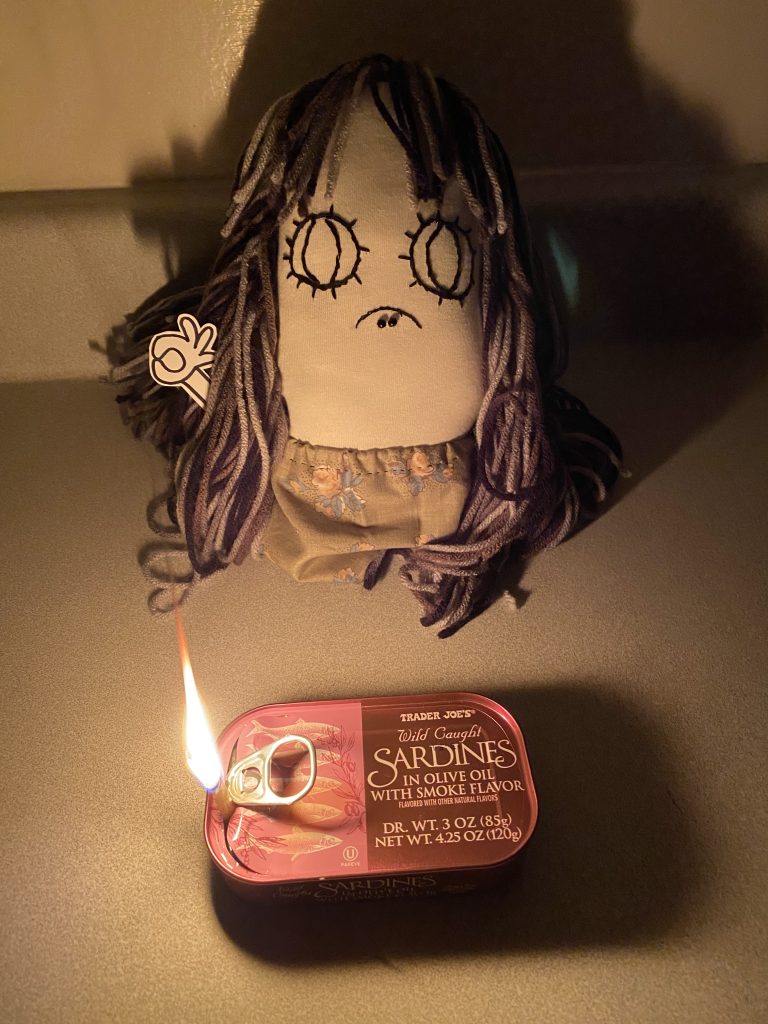
This one also burns for about 60 mins. Once it burns out, you can eat it.
Theses techniques provide very dim light, but it’s better than nothing. Even a small light can make you feel warm in the darkness. It’s OK if you don’t want to use this technique, but at least keep it in mind. The knowledge might come in handy someday.
I will share more ways to make lights in a long-term emergency, in a future post.
See you next time.
Remember, “Protect your life by yourself” (自分の命は自分で守る). You need to survive first, and then you need your emergency supply. No matter how well you prepared your emergency supplies, if you die, then all of your preparations will have been for nothing. First and foremost, keep your health up all the time. Build your stamina so that if you need to, you can evacuate as quickly as possible. Stay healthy.
Pingback: Making Lights in a Long-Term Emergency (1: Lamp Oil) #72 – Goriyama